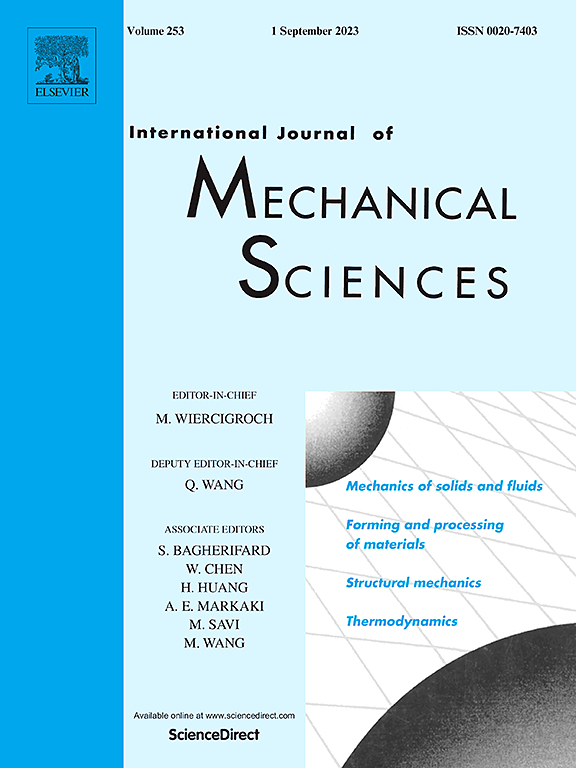Novel multiscale modeling strategy for hybrid fiber reinforced composites
IF 7.1
1区 工程技术
Q1 ENGINEERING, MECHANICAL
International Journal of Mechanical Sciences
Pub Date : 2025-02-01
DOI:10.1016/j.ijmecsci.2025.109997
引用次数: 0
Abstract
Hybrid fiber-reinforced plastic (HFRP) composites exhibit tremendous merits in terms of a balanced design between cost and performance. Despite their advantages, there is still a lack of efficient design methods to cope with energy-absorbing design problems, which has hindered their large-scale application. This study aims to develop a novel multiscale modeling strategy for HFRP composites and achieve a micro–meso–macro matched structural design. Specifically, a series of bending tests were performed on several carbon-fiber/glass-fiber hybrid composite plates and hat-shaped beams to explore the effects of the hybrid scheme, hybrid ratio, and stacking sequence on their mechanical performance. Subsequently, a novel multiscale model based on the micromechanics of failure criterion with new damage evolution laws was developed to perform a multiscale collaborative design for intralayer hybrid composite beams. A comparative analysis was performed to explore the influence of the multiscale design variables on the mechanical performance. The results indicated that intralayer hybrid composite plates and beams with a stacking sequence of [C0/G90]8 had significant advantages in flexural modulus, flexural strength, and energy absorption compared with their single fiber composite counterparts. It was also found that the higher the proportion of carbon fiber yarns in the horizontal direction and glass fiber yarns in the vertical direction, the greater was the energy absorption of the intralayer hybrid composite beams. The proposed multiscale modeling strategy was not only an effective supplement to traditional multiscale modeling methods, but also made it possible to perform multiscale collaborative optimization of HFRP composites.

求助全文
约1分钟内获得全文
求助全文
来源期刊

International Journal of Mechanical Sciences
工程技术-工程:机械
CiteScore
12.80
自引率
17.80%
发文量
769
审稿时长
19 days
期刊介绍:
The International Journal of Mechanical Sciences (IJMS) serves as a global platform for the publication and dissemination of original research that contributes to a deeper scientific understanding of the fundamental disciplines within mechanical, civil, and material engineering.
The primary focus of IJMS is to showcase innovative and ground-breaking work that utilizes analytical and computational modeling techniques, such as Finite Element Method (FEM), Boundary Element Method (BEM), and mesh-free methods, among others. These modeling methods are applied to diverse fields including rigid-body mechanics (e.g., dynamics, vibration, stability), structural mechanics, metal forming, advanced materials (e.g., metals, composites, cellular, smart) behavior and applications, impact mechanics, strain localization, and other nonlinear effects (e.g., large deflections, plasticity, fracture).
Additionally, IJMS covers the realms of fluid mechanics (both external and internal flows), tribology, thermodynamics, and materials processing. These subjects collectively form the core of the journal's content.
In summary, IJMS provides a prestigious platform for researchers to present their original contributions, shedding light on analytical and computational modeling methods in various areas of mechanical engineering, as well as exploring the behavior and application of advanced materials, fluid mechanics, thermodynamics, and materials processing.
 求助内容:
求助内容: 应助结果提醒方式:
应助结果提醒方式:


